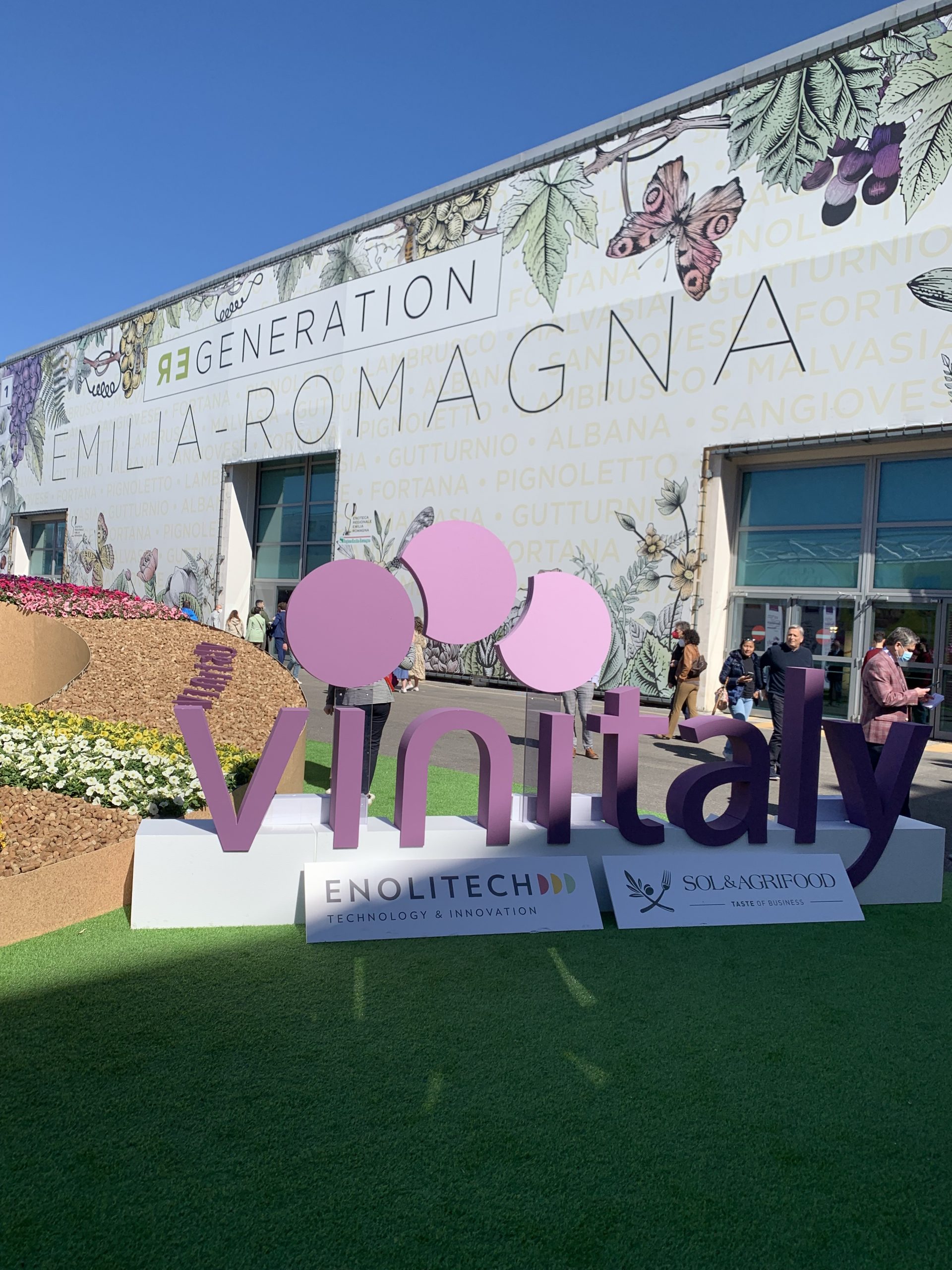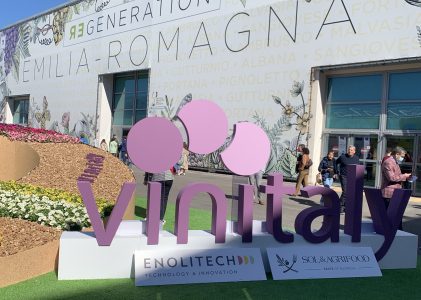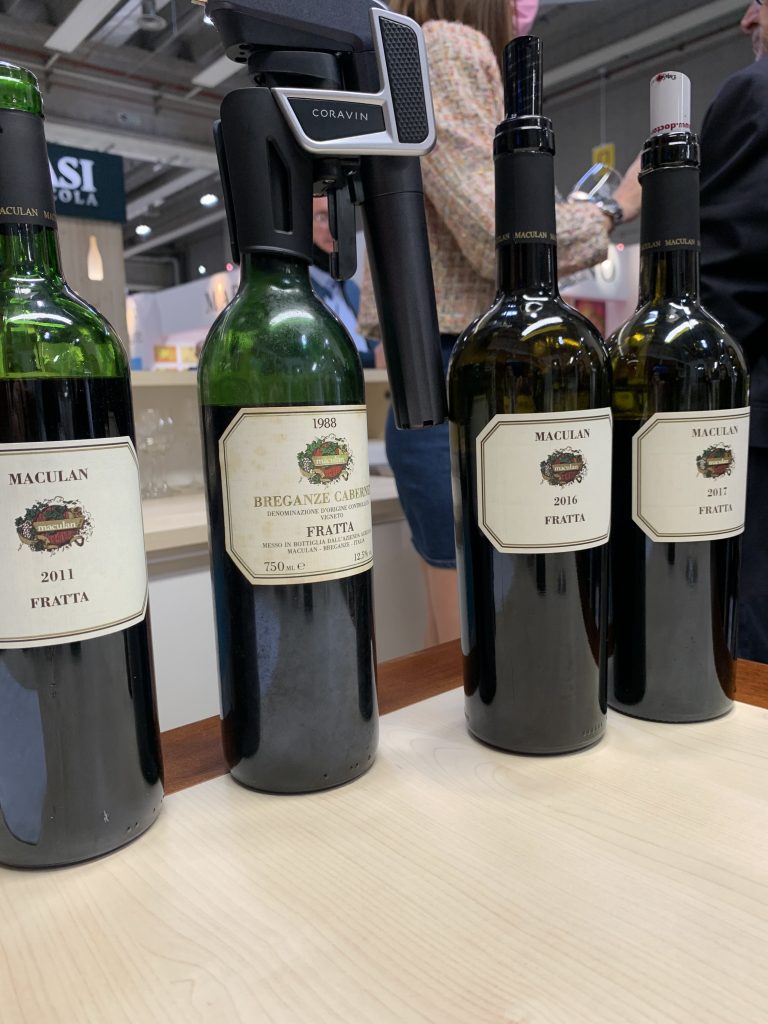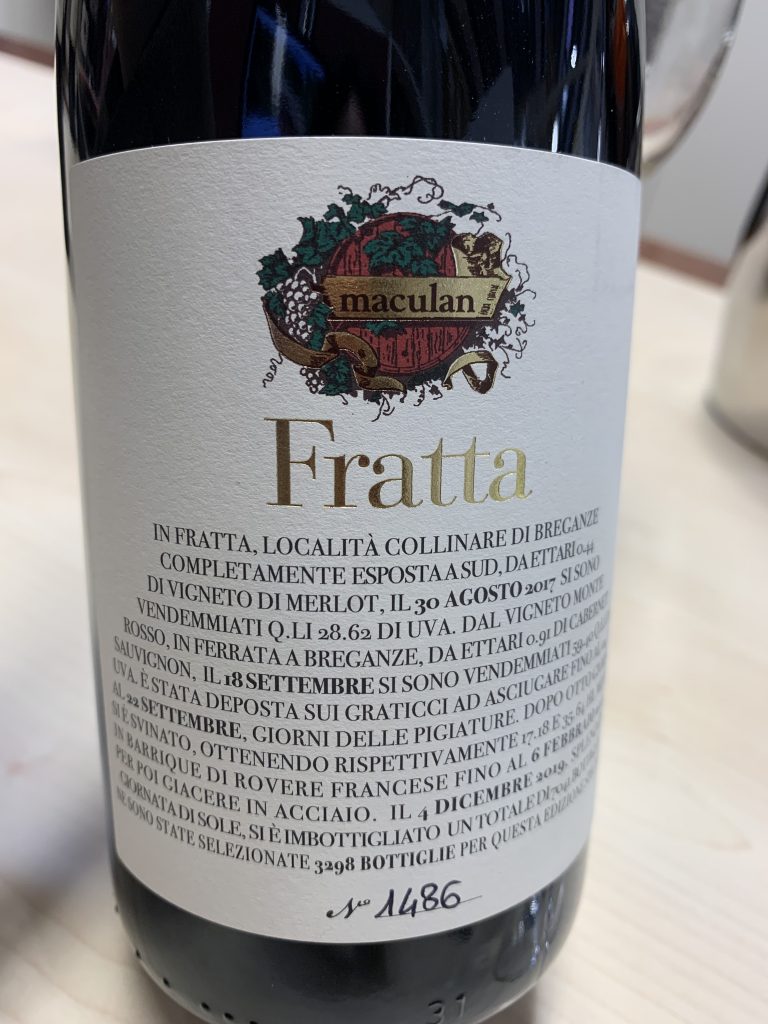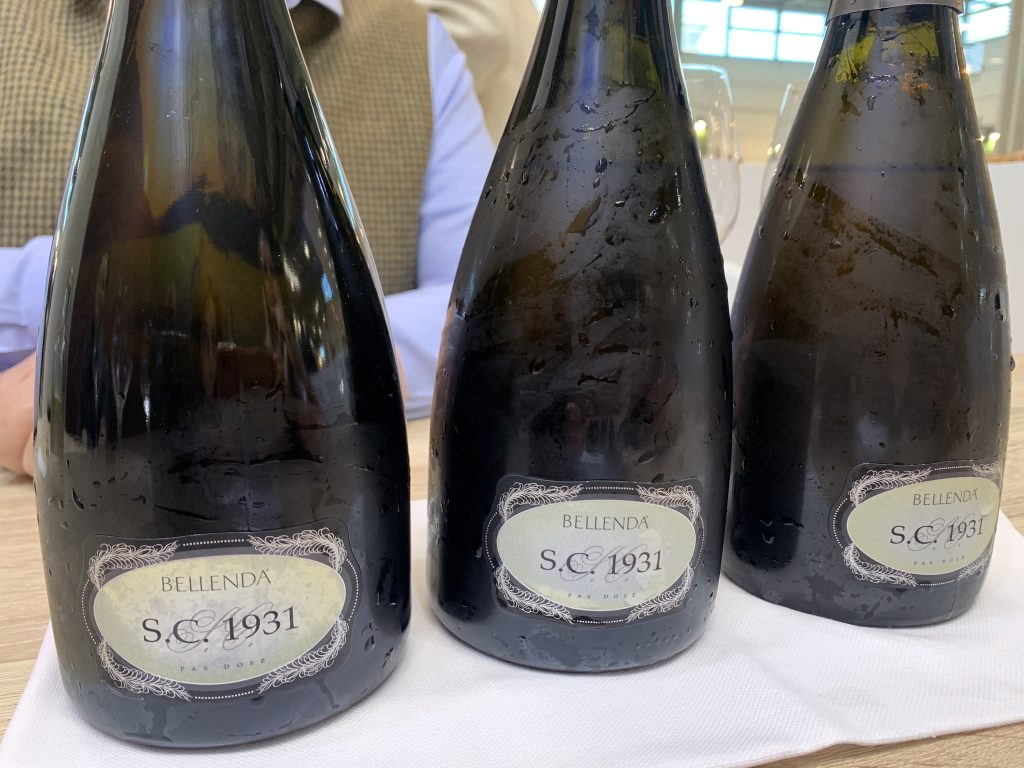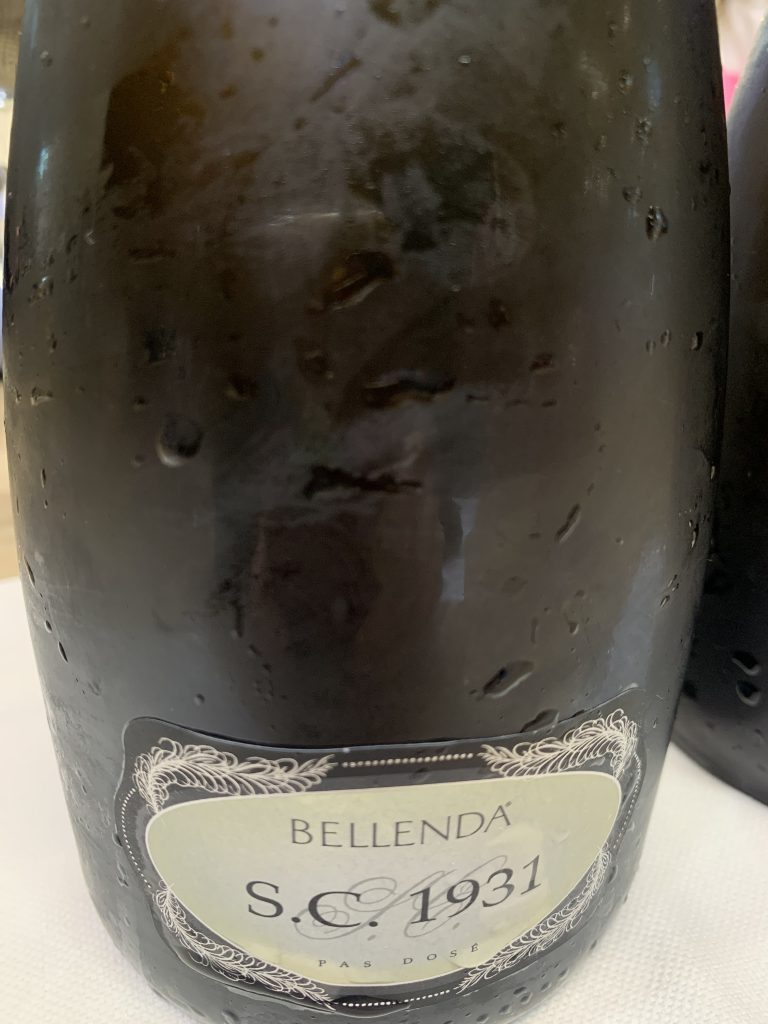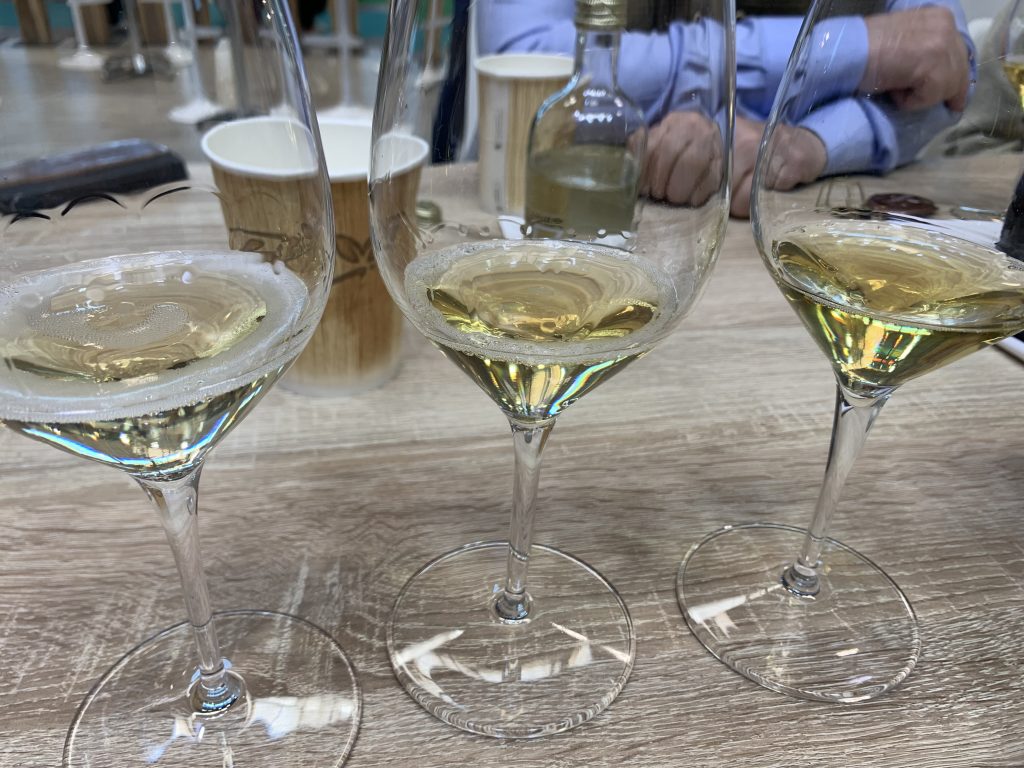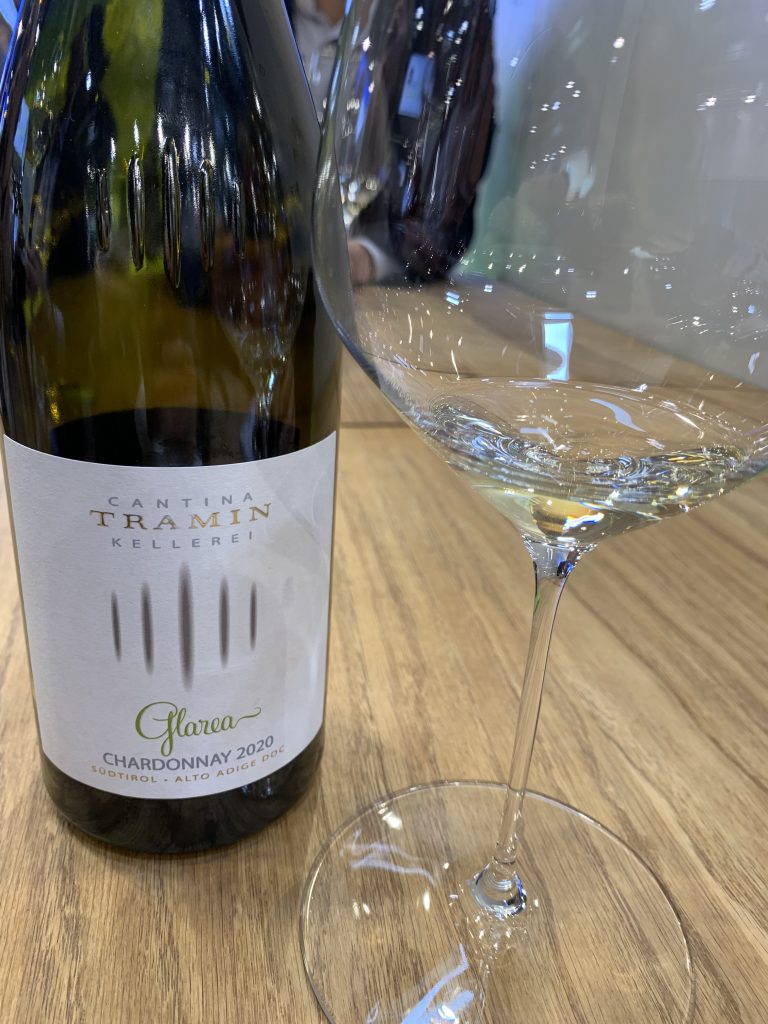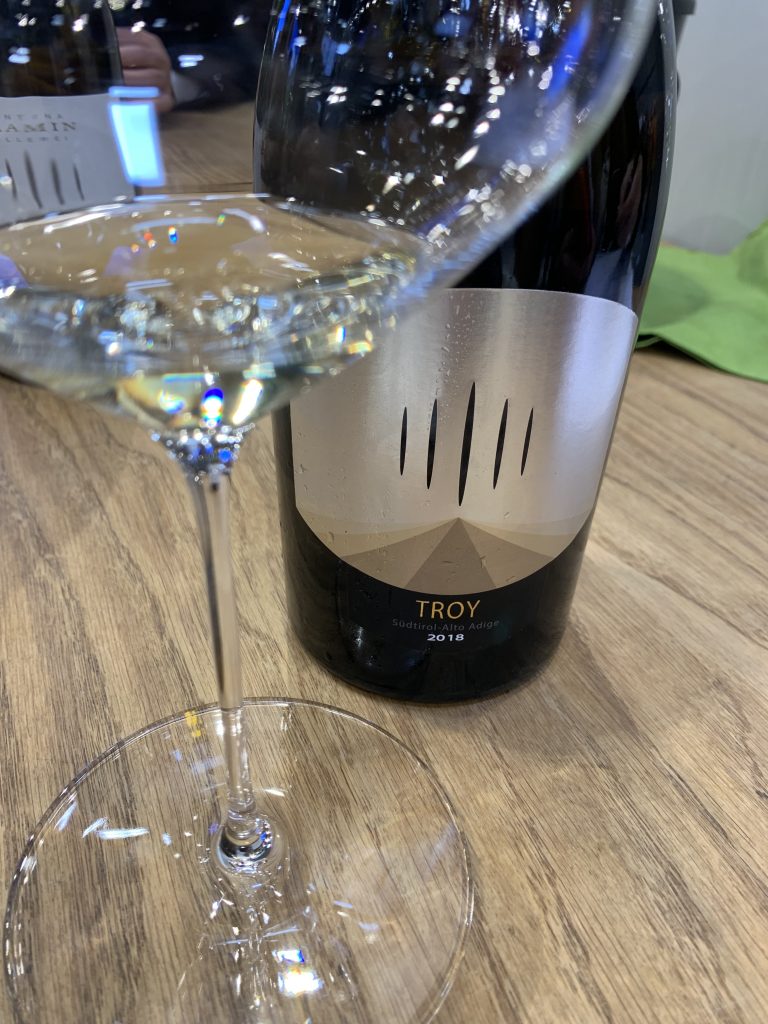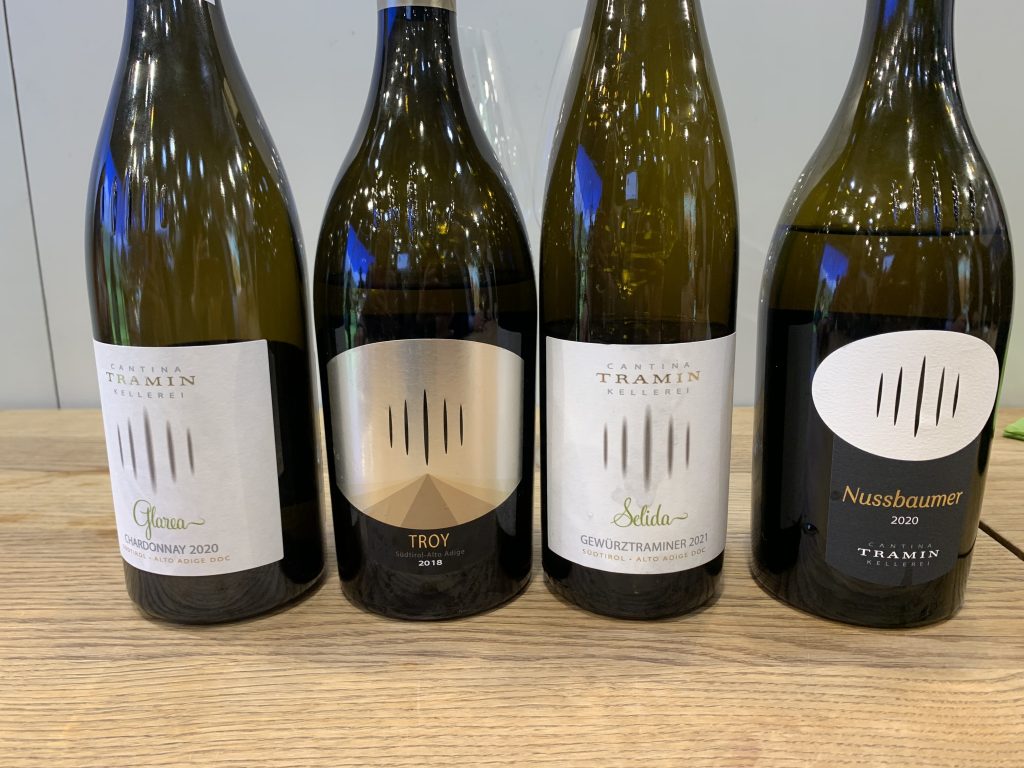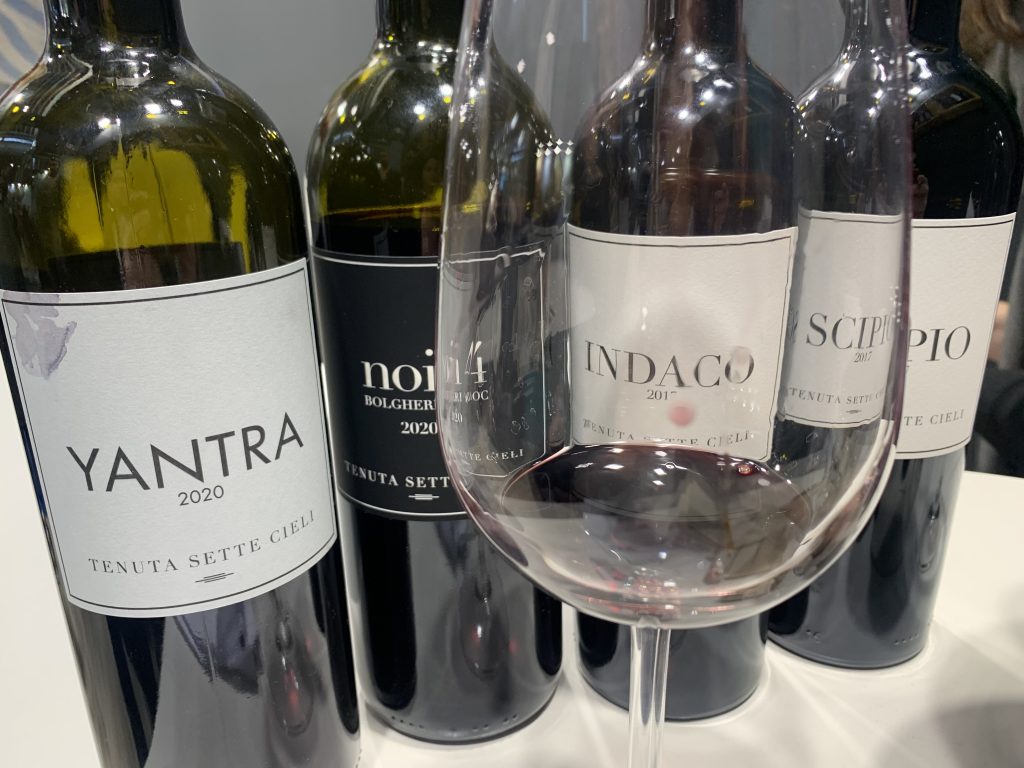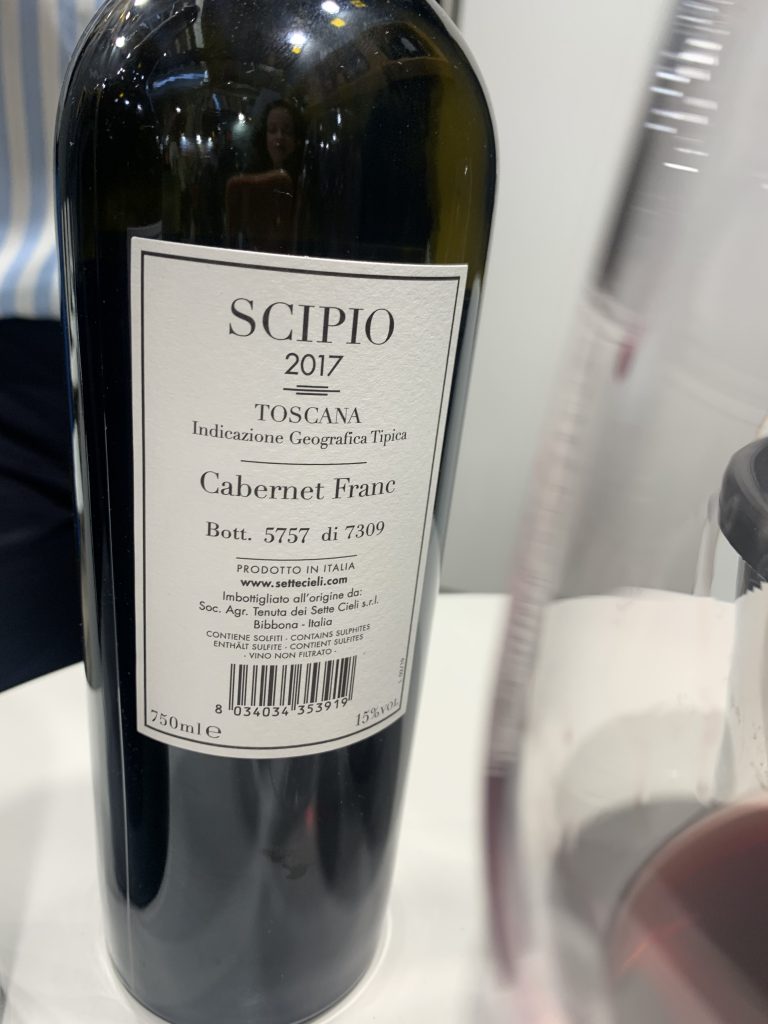When you’re missing your favorite wine event, a couple of years can seem like an eternity.
So, it should come as no surprise that folks were thrilled to take part to the 54th edition of the International Wine and Spirits Exhibition (10-13 April 2022, Veronafiere) ending a two-year interruption forced by the COVID-19 pandemic. Vinitaly ended yesterday with a sold out exhibition center and big figures: over 4,400 wineries from 19 countries, 700 top international buyers of Italian wine, more than 30 conferences and 76 grand tastings and specialty courses led by wine experts in the four-days event which hit an historical record in the ratio of foreign buyers to total admissions: 25,000 foreign operators (from 139 countries) represented the 28% of the whole number of operators who arrived at the fair (88,000).
Innovations in the 17 show halls started with the ‘fourth colour of wine’ area focusing on the expanding phenomenon of Orange wine with a master-class followed by a walk-around tasting of 38 producers selected from 7 countries ( Slovenia, Italy, Austria, Georgia, Serbia, Croatia and Greece) and went beyond including “MicroMegaWines – Micro Size, Mega Quality”, the new section for niche and limited edition Italian wines. The Organic Hall implemented the offering by Vinitaly Bio, and the Mixology section area – a full-scale trendsetter for the evolution of consumption habits, from aperitifs to low alcohol or alcohol free cocktails – made its official debut with its own format that gingered up the trade show atmosphere.
Solidarity was also a leitmotiv of the exhibition of wines and spirits at Veronafiere which has decided to allocate all proceeds from the 76 super-tastings and paid master-classes to initiatives organised by Caritas charity in support of people affected by the war in Ukraine. The sum, estimated to be worth €80,000, will be entirely donated to hospitality for refugees and, especially, Ukrainian families. The “Wines for Peace” charity auction, organized by the Brunello di Montalcino Wine Consortium in collaboration with the Chianti Classico DOCG Wine Consortium and the Bolgheri and Bolgheri Sassicaia DOC Wines Consortium, conducted by Sotheby’s on April 11, gave the entire proceeds from the thirty lots of vintage wines offered by producers to the Ukrainian refugees’ facilities managed by the Diocesan Caritas of Siena-Colle Val d’Elsa-Montalcino.
Vinitaly provided an astonishing atmosphere, the taste of many glorious wines, and wandering among the stands, the trends of the moment became evident: the first is that wine is increasingly organic, and it is a phenomenon that extends to an eco-sustainable vision of the entire supply chain, from the biodiversity of the land to the lessened use of sulphites. The second is the triumph of unconventional wine production methods, made by bold producers who commit totally to make these wines and go through really hard, tough times and then turn a corner and have a good year. The third trend is the rediscovery of native and autochthonous cultivars is increasingly widespread, perfect to represent the essence of a territory.
Here are the wines I got the chance to taste at the most important Italian wine event of the year: refreshing whites, deep and dense reds, seamless bubbles. Different wines for different occasions, but all must be tried.
My journey started at Maculan winery, the historical 40 hectars Breganze (Vicenza) estate founded in 1947, managed today by Fausto Maculan’s daughters Angela and Maria Vittoria, among the 130 best Italian producers selected by Wine Spectator, the most prestigious American magazine in the wine sector, for OperaWine super-tasting that took place on April 9 in Verona.
I had the unique opportunity to do a vertical tasting of 1988, 2011, 2016, 2017 vintages of Maculan’s iconic Bordeaux red blend Fratta. Gentleman magazine included Fratta 2017 among the ten best red wines of Italy in the world. Monica Larner- The Wine Advocate (Robert Parker) awarded Fratta 2017 with 96/100, placing it in fifth place in a ranking that includes the great reds of Valpolicella.
“We welcome these awards with pride and gratitude – declared Angela Maculan, commercial manager of the company – 2017, in particular, will be remembered as a special year, a unique piece of our history, due to the wine high quality and its celebration of the 40th anniversary of the first Fratta in 1977″. Fratta 2017, presented on the market in a limited edition of 3,298 bottles, the same number of the 1977 vintage, using the same Burgundy bottle and a special label that reproduces the original one: at that time it represented a truly revolutionary labelling because it contained all the information on the harvest, the processing of the grapes and the wine production.
Fausto Maculan masterfully directed the evolution of this Bordeaux blend in its forty years: the first vintages, in fact, were born from 100 grapes % Cabernet Sauvignon, harvested in a vineyard in the hills of Breganze, in via Fratta. Over the decades Fratta has become a blend, thanks to the addition of Merlot from younger vines, located on the top of the hill of the same Via Fratta where it all began. A transformation that gives greater roundness and softness to an intense and elegant red wine.
From iconic Veneto reds my Vinitaly continues with the revolutionary sparkling wines created by Umberto Bellenda who faces the world of Prosecco Superiore with an unconventional, creative and elegant approach, carving out an exclusive production niche: the Traditional method Prosecco Superiore DOCG. Bellenda’s estate includes 35 hectares of vineyards, 80% of which are planted with glera grapes, from which the Traditional Method Conegliano Valdobbiadene DOCG Prosecco Superiore is crafted, almost an exception to the unwritten rule that requires the Tank (Martinotti) method for these bubbles.
Umberto Bellenda is a wonderful storyteller: his recall of the history and anecdotes of its S.C. 1931, Conegliano Valdobbiadene DOCG Prosecco Superiore Metodo Classico Pas Dosé is an intimate portrait of what its estate and its wines represent to him. Its willingness to learn from his fellow winemakers and experiment are paramount: “A wine is not a number, but is formed of all its components and shaped by a vision” tells me with pride and confidence. “Every challenge in the vineyard and in the cellar gives more value to your final product” says, describing its journey from the crazy idea of a “Colfondo” in 2000 to the 2006 first vintage of its S.C. 1931 – Traditional Method Conegliano Valdobbiadene DOCG Prosecco Superiore Pas Dosé that I had the chance to taste in a vertical tasting of 2018, 2012 and 2006 vintages.
Made with glera grapes from the hills of Carpesica, in that of Vittorio Veneto, S.C. 1931 takes its name from Sergio Cosmo, founder of Bellenda, and from the date of his birth. Fermentation takes place partly in steel and partly in wooden containers without temperature control, with a slight malolactic before the second fermentation. Aging on the fine lees for three months is followed by fermentation in the bottle and resting on the lees for 22-24 months, to finish everything with disgorgement and topping up with zero dosage.
Bellenda’s Conegliano Valdobbiadene DOCG Pas Dosé is an experience that evolves from year to year. An unconventional bubble, with a strong personality, which gives intriguing notes candied citrus fruits and toasted hazelnuts and surprising nuances brioche and custard to the nose and palate. Complexity and minerality stand out in mature vintages which offer incredible complexity and marked minerality, with interesting hints of hydrocarbon, honey and barley candy.
From this wonderful bubbles my journey at Vinitaly goes to the the heart of Alto Adige with the fascinating whites of Tramin winery that comprises of one of the oldest networks of farmers: founded in 1889 by Pastor Christian Schrott, Tramin now features 270 members. Today it has 270 hectares, across the towns of Termeno, Egna, Montagna and Ora, of which 40 are dedicated to the Selection line. 70% of the vineyard is cultivated with white grapes, the most widespread variety is Gewürztraminer (22%), followed by Chardonnay (12%).
With a long and successful tradition, Tramin’s wines are authentic expressions of a unique terroir, made possible by a common philosophy of commitment to excellence, hard work and dedication. With more than ten Tre Bicchieri-award winning wines to date, and the 100/100 points of Epokale’s Robert Parker’s Wine Advocate in 2018, the first Italian white wine to obtain this result, Tramin is crowned by the talent of Willi Stürz, named Gambero Rosso’s “Winemaker of the Year” in 2004. He has skillfully led the winery from 1992 addressing its winemaking challenges from the start and after the successes obtained with Gewürztraminer he has identified in Chardonnay the grape capable of excelling in the territory.
For the first time at Vinitaly it was possible to taste Glarea, the new Alpine Chardonnay from the Classics line. Tramin has embarked on a path of study and enhancement of Chardonnay variety starting in 2002 with the Stoan cuvée, arriving in 2015 at the birth of Troy: the Chardonnay Riserva with an alpine footprint that originates from vineyards located on the eastern side of the Mendola massif. A challenge, that of Chardonnay, which is part of the wider enological project with which Cantina Tramin intends to extract every detail and enhance all the potential of the Alpine territory to create great white mountain wines.
When producing a crisp, fresh International varietal like Chardonnay “It’s all about quality, good fruit and being clean” – said Günther Facchinelli, PR and Communication at Tramin.
From Alto Adige my Vinitaly journey goes to skies of Tuscany at “Tenuta Sette Cieli” on the hills north of Castagneto Carducci, in Pian delle Vigne in Monteverdi Marittimo, where Erika Ratti established her winery, Tenuta Sette Cieli, in 1998. The first four hectares of vineyards were planted in 2001 on terraces located at 400 metres of altitude. Today the winery owns 120 hectares of land, of which 15 are under vine.
Elena Pozzolini, who oversees the production, is one of the young winemakers who are shaping the image of the region. As such, she has been featured on Wine Enthusiast amongst the “trailblazing women leading the wine industry forward”. Her strong background and huge experience gained in Italy and abroad (California, Australia, Argentina) allow her to keep a careful eye in the vineyard and in the cellar.
She explains me thoroughfully how soils composition varies based on altitude. On the top of the hills at 400 metres, rock is the main element of the medium-textures soils, whereas on foothill the soil is made mainly by clays, orangey red sands and loam, of alluvional origin.
Vineyards are farmed organically and entirely by hand. Each variety and each single plot is vinified separately, thus allowing for a better enhancement of the many different nuances of each vineyard.
Fermentation is carried out with the use of ambient yeasts, which are also being studied by the University of Pisa. “We believe strongly in the identity of each terroir and, consequently, of each wine. This is the reason for our decision to work with indigenous yeasts” explains Elena Pozzolini.
2005 marked the first vintage of Tenuta Sette Cieli. Bordeaux varieties are the core production of the winery, with the small exception of one hectare of Sangiovese planted in 2016 as a small challenge the winery decided to take, spurred on by the peculiar characteristics of the area. The oldest vines, planted in 2001-2002, are Cabernet Franc, Cabernet Sauvignon, Malbec and Merlot, whereas the youngest vines, planted in 2016 are Malbec, Merlot and Sangiovese.
Like many winemakers, Pozzolini believes in being proactive in the vineyard, babying the fruit so it can find balance and the varietals can express their true character. Once the juice is in the winery, she tries to touch it as little as possible.
Over the years, the niche production has increased little by little and accounts nowadays for a total 90.000 bottles of these wines: Indaco from Malbec, Cabernet Sauvignon and Merlot, Scipio made entirely from Cabernet Franc, Noi 4 from Cabernet Sauvignon, Merlot, Petit Verdot and Cabernet Franc, and finally Yantra from Cabernet Sauvignon and Merlot.
Scipio 2017 from Tenuta Sette Cieli, is a 100% Cabernet Franc, which takes its name from the Roman general Scipio, who defeated Hannibal in the Punic wars. A red made from very low yields in the Bolgheri area, with a complex nose, with elegant notes of fruit and spices, which at the sip is dense and inviting.
Indaco IGT Toscana 2017 is crafted with Malbec, Cabernet and Merlot that are perfectly integrated in this powerful, elegant and structured wine, which best expresses the complex and rich terroir, with an enchanting nose of rose, violet, blueberries and pepper, elegant spicy notes and aromas of dark red fruits. “I love Malbec, especially as a blender with Cabernet even if the first harvest with this grape was quite tricky, now I am proud of how far it has gone” commented Elena Pozzolini.
The name comes from the beautiful sky colour that is visible at sunset. “At sundown on the hills over our estate everything turns indigo” explained Elena Pozzolini.
And as the sun goes down on this Vinitaly 2022, I imagine to be on the Bolgheri’s hills to witness thousands of glowing indigo shades that brighten the night sky.
